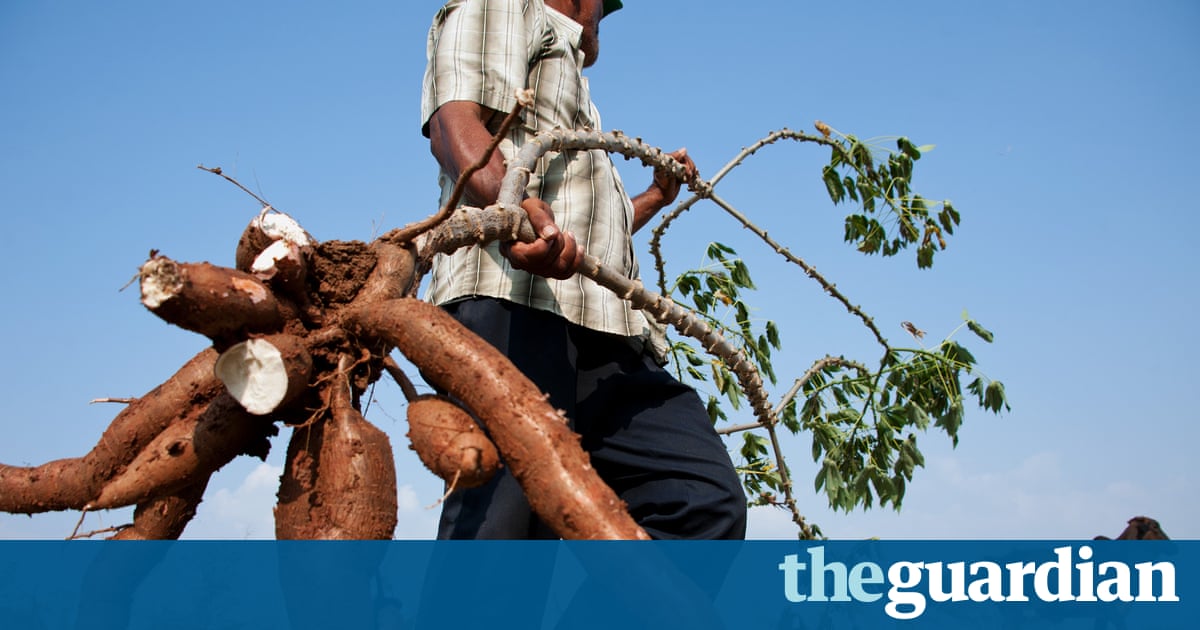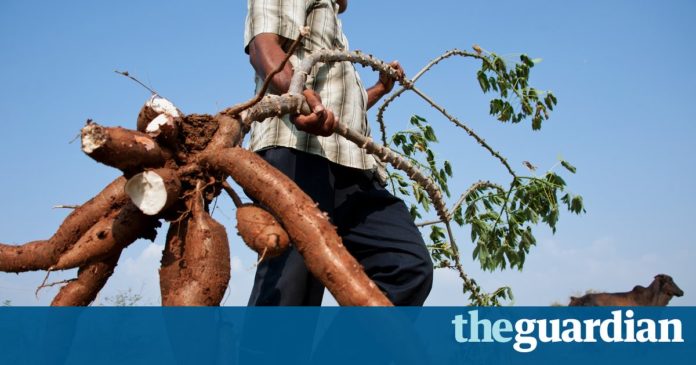It is a plant that millions depend on for survival. But another, identical range is also possible lethal and desperate people turning to the black market cant tell them apart

Venezuela has suffered food shortages for several years but things merely seem to be getting worse. People are resorting to the black market for food, skipping dinners and rummaging through garbage in search of sustenance. Last year, three quarterss of adults involuntarily lost an average of 19 lb ( 8.6 kg ). Malnutrition is on the rise and people are being exposed to lethal meat. At least 28 people have died as a result of eating bitter cassava, having mistaken it for the sweet variety.
Cassava, also known as manioc and yuca, is a staple food for about 700 million people worldwide. The perennial flower is native to South America but was brought to Africa by 17 th-century explorers and later introduced to Asia. It flourishes in tropical climates. The flower is very resilient, living where many other crops fail, and involves less human investment per calorie than potatoes. It is often poorer communities that rely on cassava for their survival.
Both the leaves and the tubers of a cassava flower are supported in a wide range of meat. The tubers are similar to potatoes and can be prepared in much the same way: boiled, fried or mashed. In Venezuela in 2015, McDonalds outlets offered cassava fries when they couldnt get hold of potatoes. The tubers can also be ground into a flour, which can be used in cakes and bread. In the west, cassava is best known in the form of tapioca.
But this versatile, resilient harvest has one significant downside: raw, unprocessed cassava is the cause of cyanide.
All parts of the cassava flower contain cyanogenic glycosides that help defend it against pests. The cyanogenic glycosides impart a bitter savor that are typically puts off any casual grazers once they have taken the first bite. But the plant also has a backup plan to stop more determined herbivores. The cyanogenic glycosides can be rapidly processed by enzymes within the flower to liberate lethal hydrogen cyanide. The enzymes and glycosides are separated within the flower cells but if the tissue is injury, for example by a bite, the two mixture and rapidly release the toxic compound. Enzymes within the human bowel can also liberate hydrogen cyanide from the cyanogenic glycosides if absorbed.
Hydrogen cyanide disrupts the fundamental process of respiration within cells. Without energy, cells succumb swiftly and on a massive scale, leading to loss of life. Symptoms include vomiting, nausea, headaches and convulsions. Treatment is possible but are starting promptly, before irreversible damage is done.
It may seem extraordinary that such a potentially lethal plant would become the third most important harvest in the tropics. However, the protection against pests is an advantage when developing the harvest and human ingenuity means that the tubers can be processed to bring the toxic content down to safe levels. The quantity of cyanogenic glycosides in the tubers varies greatly with flower range( from 50 mg of cyanide equivalent per kg up to 500 mg ), and is indicated by the bitterness of the tuber. It is the sweet diversities that are usually feed and it is these that you would usually find in Venezuelan marketplaces.
The bitter varieties can be visually very similar to the sweet but necessitate careful processing to stimulate the flour safe to feed. Peeling, grating or grinding the tubers followed by soaking in water causes the release and safe vapor of the hydrogen cyanide. The hour needed for soaking will vary according to local temperatures and the variety of cassava being prepared. As has been seen in Venezuela, preparing bitter cassava in the manner of a sweet assortment can have fatal consequences.
Humans do have some natural defense against the ingestion of cyanides. Rhodanese enzymes within the bodys cells add a sulfur atom to the cyanide division, converting it from the highly toxic cyanide( CN ) to the much less toxic thiocyanate ion( SCN ). Normally a human could feed 30 -3 5mg of hydrogen cyanide from cassava without any ill impacts but problems result if they are in poor health or if the influx of cyanide is sudden and greater than the detoxification system can cope with.
There are laws in Venezuela prohibiting sales of bitter cassava roots for food. But desperation increases and black market grow, the chance of it being sold and eat in mistake for the sweet variety get higher. Venezuelas troubled economy and food shortages are not expected to improve over the coming year. The last reported fatal cases of cassava poisoning occurred in February 2017. Lets hope these are the last.
Read more here: http :// www.theguardian.com/ us



